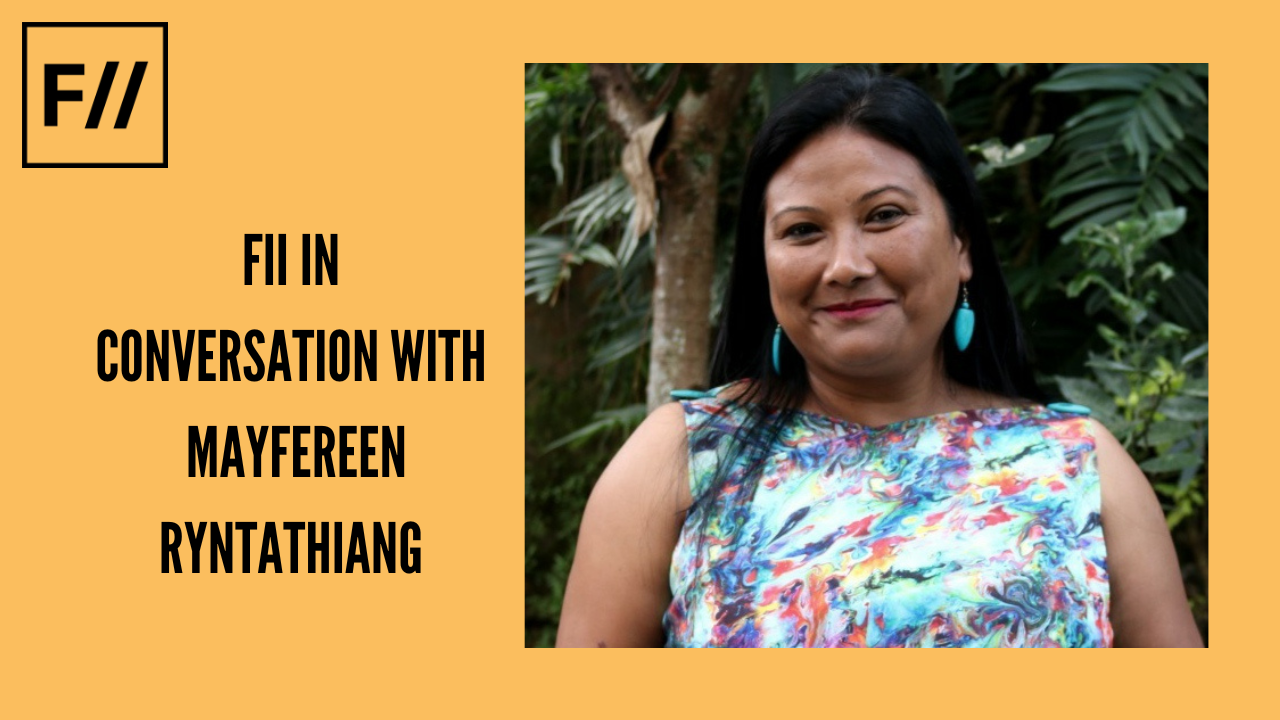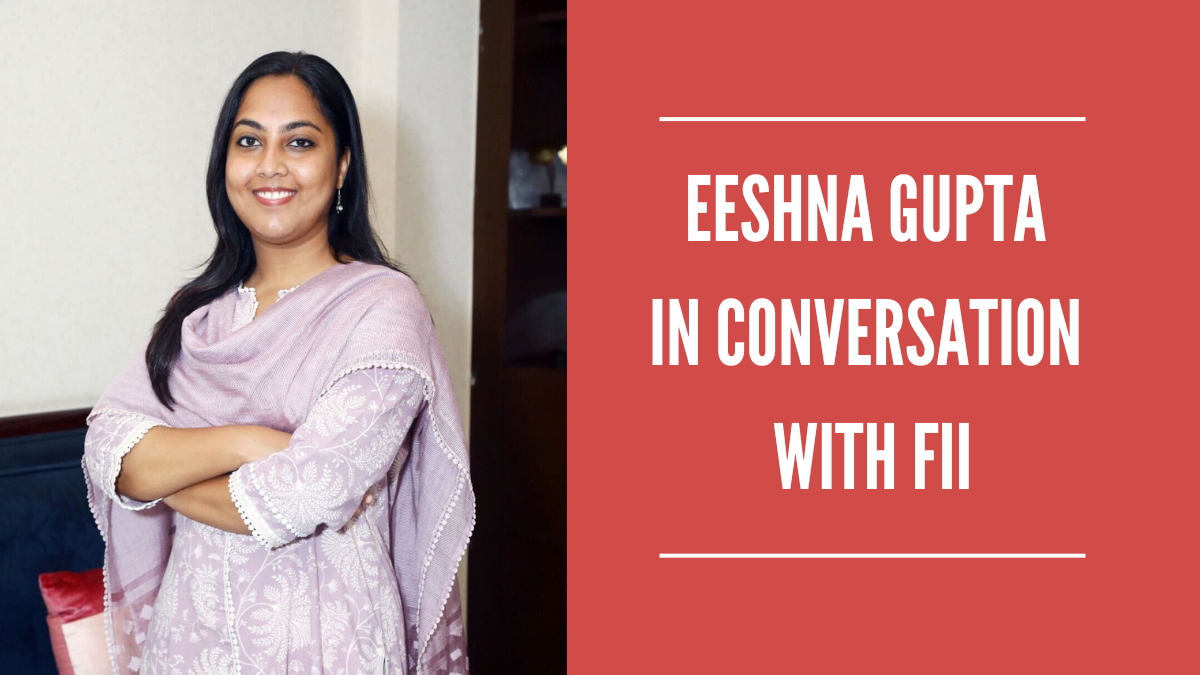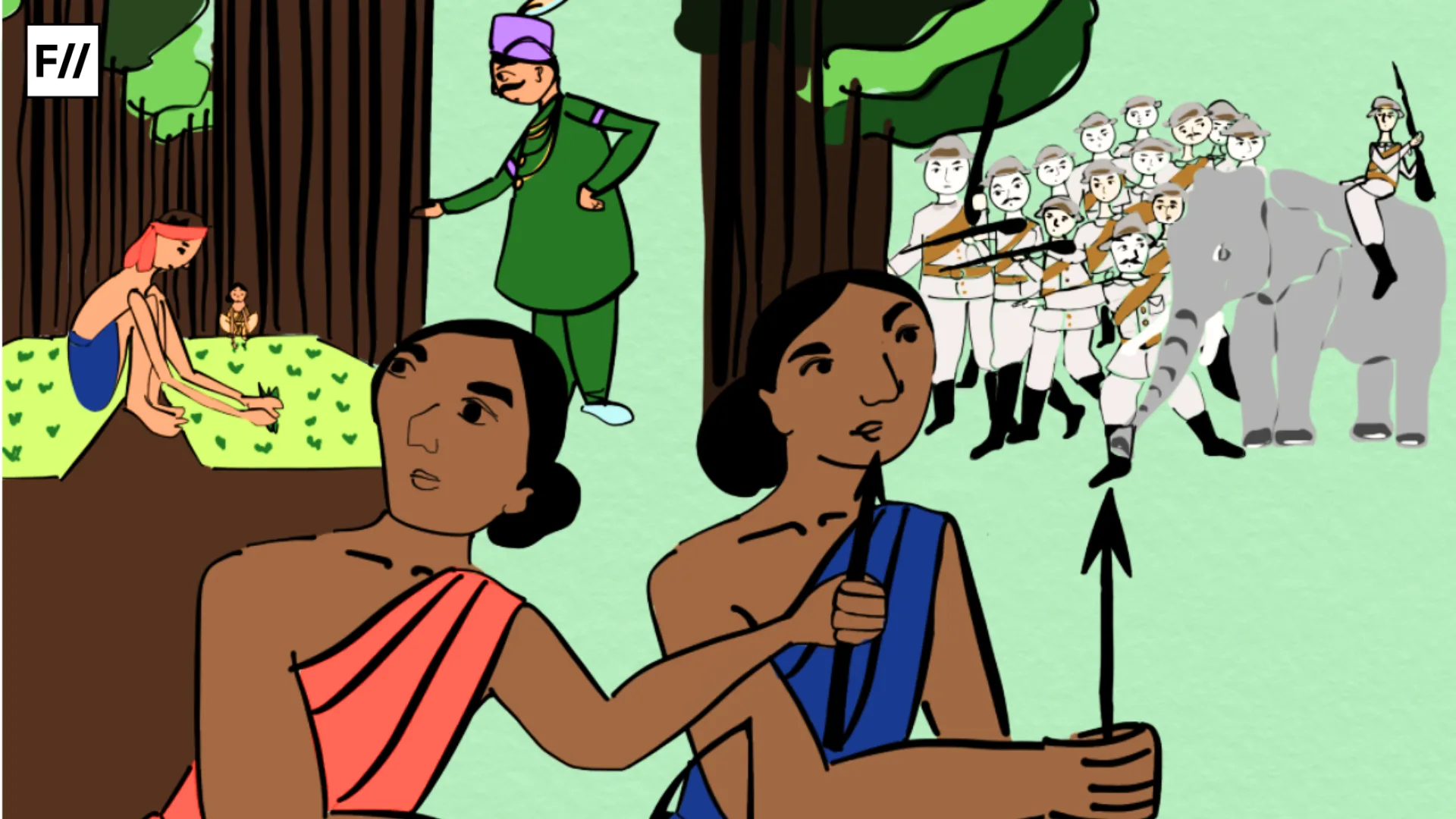Mayfereen Ryntathiang, a social worker and human rights activist, founded Grassroot Shillong back in 2007 to defend and promote Indigenous people’s rights. She is also a frequent panelist and representative at various international indigenous conferences. Her work involves working with communities to improve livelihoods, empower women and youth, and document their cultural heritage. Grassroot Shillong’s holistic, positive impact, over the years, has brought to fruition numerous publications, documentaries and skill development programmes, amongst other campaigns.
“I think for indigenous communities in the North East, we are well-grounded in all our different cultures. Our region has given us more power to accept each other, as different diverse cultures, tribes, sub-tribes, identities, traditions, languages. I think this has brought us together, unifying us rather than dividing us. That culture of acceptance extends to how we embrace other communities outside from the North Eastern region as well. I am a Khasi and my identity is shaped both by the community that I belong to and the entirety of the region that I share with my fellow communities.”
Mayfereen Ryntathiang
Speaking to her, I noticed, first, her infectious optimism and kindness—under which years of experience cumulate in a deep love for her activism work.

FII: You first studied English literature (and completed your Master’s in this subject, as well), but then decided to pursue education and work in Human Rights. What first sparked this change in passion or goals?
Mayfereen: English Literature will always be my first love—I have always enjoyed studying characters’ psychologies. But then I started to notice the lack of awareness of rights in my state. People weren’t informed of what their rights are. That’s what inspired to start Grassroot: a right-based approach organisation working for the people of the North East of India. Starting the organisation was one aspect, but then I started to look at how much knowledge I had myself. That’s when I decided to take a course on Human Rights, to study human rights issues that are being tackled by different people and organisations around the world. This enabled me to enhance my knowledge. I suppose that’s how human rights became my second love. (Laughs.)
Also read: The Attribution Of ‘Backwardness’ To Indigenous Communities And Environmentalism
FII: As the president of Grassroot Shillong, in your experience, how can people and civil societies work towards justice from the bottom-up? Would you agree that bottom-up action is more effective than top-down proclamations?
Mayfereen: I’d say yes, if people are aware and empowered to advocate for their own rights. At the same time, I won’t entirely disagree with the top-down approach—provided we have people in power who are actually passionate about human rights. It shouldn’t just be about working with on-ground people for the sake of agendas of fulfilling schemes. We only have a handful of such people, who are actually passionate about working for communities.
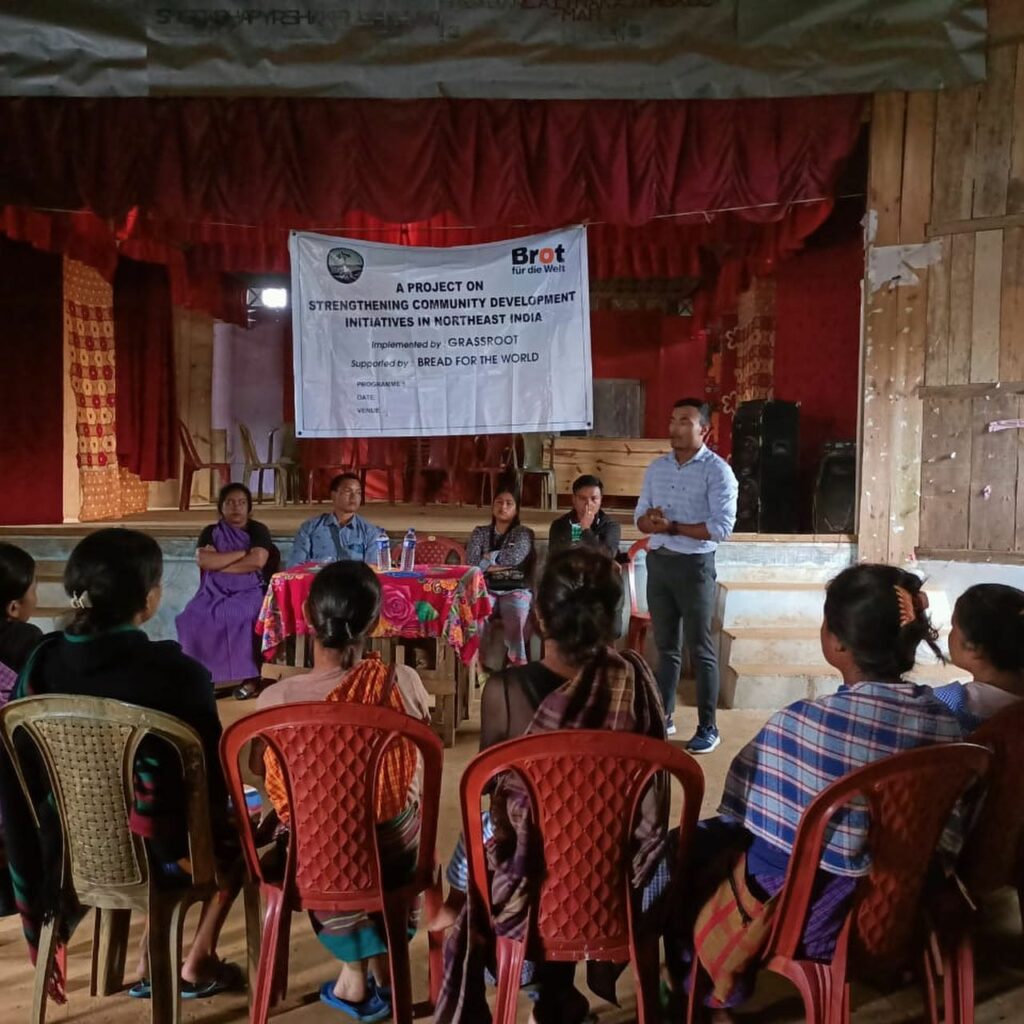
In my experience, people-centric action is often bottom-up, wherein people self-advocate for what they need.
FII: Speaking of governmental action, Grassroot initially commenced with a project related to democracy. How did that shape the organisation’s impactful success?
Mayfereen: Back in 2008, we were working together for the Association of Democratic Reforms (New Delhi). We started with researching the affidavits of the various MLA candidates in the state, a statement that wasn’t publicised as much although it is a mandate that these affidavits ought to be public. So we sought to inform voters correctly.
“I think if media is used positively, it can engage, it can involve, it can engage a lot of our stakeholders in a more meaningful and fast-paced manner. Now, our primary source of news is through social media, something that we can use well for involving local communities and providing opinions on governance. It can be powerful.”
Mayfereen Ryntathiang
That’s when we also joined the nation-wide campaign for NOTA: introducing the option of “None of the Above” on the electronic voting machine. It was only in 2013 that the Supreme Court agreed to have this part of the election. It all started from a casual conversation we had—“What if we don’t like all the candidates?”
FII: That was truly such a big win!
Mayfereen: True. We didn’t actually expect things to work out so well!

FII: Speaking of public awareness, a lot of your work involves facilitating short film and documentary projects. One of your animation projects also received an award. How does this media play a role in amplifying impact and sharing cultures?
Mayfereen: “The Peacock and the Sun” is a traditional folklore of the indigenous Khasi culture. In 2012, I realised that our children at home do not know about our own stories. They would simply walk Cartoon Network and other animations from around the world, without integral knowledge from our roots. Hence, we decided to produce an animated film that communicates our cultural values to our children.
Also read: Remembering Indigenous Struggles: The Santhal Rebellion
I think if media is used positively, it can engage, it can involve, it can engage a lot of our stakeholders in a more meaningful and fast-paced manner. Now, our primary source of news is through social media, something that we can use well for involving local communities and providing opinions on governance. It can be powerful.
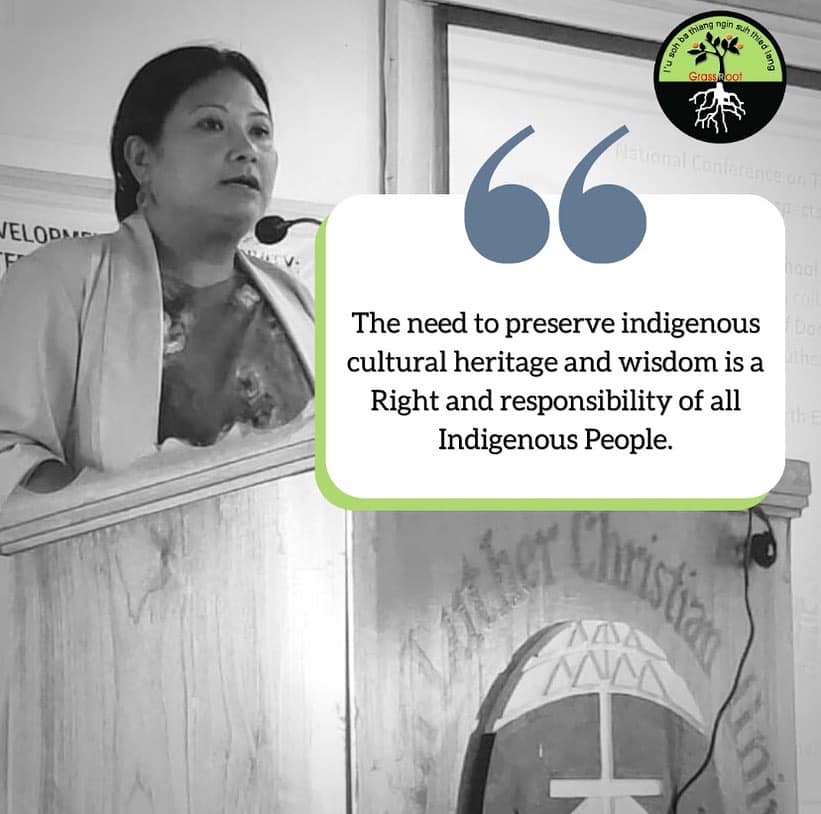
The other thing is that most forms of news media love to report on politics. Their sole focus on popular politicians diverts attention from what the people want to know and what the people are saying. So, I think we need media that provides a platform for people’s voices.
FII: Do you think that indigenous women are given more equitable space at international conferences and platforms?
Mayfereen: Yes, at least the international indigenous platforms that I have been to. Women are not only given opportunities, but also given access. I have seen and met so many indigenous women around the world who have been able to take advantage, in a good way, of this platform to raise issues. For example, the Indigenous women from South America raised the issue of lifting the ban on the Coca plant leaves chewing (a North American regulation because of its consideration as a drug there)—which they traditionally do in the winters to keep themselves warm.
I have met indigenous women who raise awareness about how governments, who know nothing about indigenous people’s rights, lives and land, dictate and restrict their communities. I have met indigenous women from many different communities, from India and around the globe, who are aware of their rights. So, in that sense, international platforms have given many opportunities, even for research.

Gender accessibility is foremost at indigenous organisations and platforms, internationally, nationally and locally. For instance, now, when we conduct any research alongside indigenous people, indigenous women prioritised.
FII: Every indigenous community has different particular identities, across their different regions. How do these specific intersections shape the experiences of women from North Eastern indigenous communities?
Mayfereen: I think for indigenous communities in the North East, we are well-grounded in all our different cultures. Our region has given us more power to accept each other, as different diverse cultures, tribes, sub-tribes, identities, traditions, languages.
“As a non-governmental organisation, when we first started out, we didn’t even expect to reach 15 years. So, we commemorated this on the 10th of December, 2022, as a moment for celebrating resilience, rights, and resistance for people around the world, around the north east, and around Meghalaya.”
Mayfereen Ryntathiang
I think this has brought us together, unifying us rather than dividing us. That culture of acceptance extends to how we embrace other communities outside from the North Eastern region as well. I am a Khasi and my identity is shaped both by the community that I belong to and the entirety of the region that I share with my fellow communities.
In fact, this month, we will be having a discussion with all the indigenous women in the North East to understand how we can collaboratively strengthen our voices, together.
Also read: Adivasi Literature: Indigenous Stories Must Be Made Available To More Readers
FII: Given that Grassroot Shillong completed 15 years this July, what was your highlight from this (past) year working on-ground? Especially since we’re in the post-pandemic phase.
Mayfereen: Reaching this milestone was, at first, unbelievable. (Laughs) As a non-governmental organisation, when we first started out, we didn’t even expect to reach 15 years. So, we commemorated this on the 10th of December, 2022, as a moment for celebrating resilience, rights, and resistance for people around the world, around the north east, and around Meghalaya.
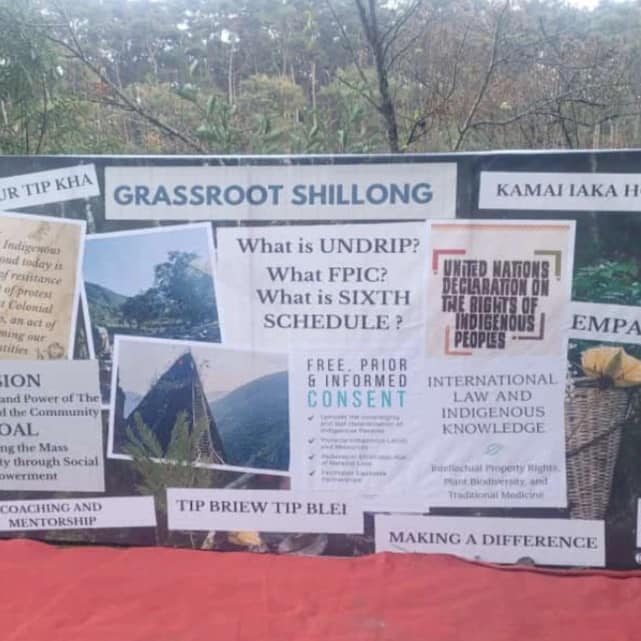
So, we celebrate that, because Grassroot has been working with indigenous communities for such a long time—we have seen an onslaught of rights violations and also the abuse of indigenous rights. So, if it weren’t for our collective resilient understanding of rights—not only of Grassroot, but our whole team—we wouldn’t have been able to reach this far.
As an NGO, we weren’t sure if we were going to be able to survive through COVID, but we learned many new facets of online platforms. That enabled us to connect to people across, to reach out to COVID-19 interventions, to contribute to training during a pandemic. Some of our initial funding agencies couldn’t continue to support us, but we received new support from so many different individuals and organisations. During COVID, we focused almost solely on work in Meghalaya.
FII: Your organisation works in multiple facets of human rights, identifying reproductive health, indigenous cultures, and sustainability as interlinked. How does such an intersectional approach improve your impact?
Mayfereen: The thing is that when we enter a community. Our entry point is not rights, directly. A lot of people would be confused by this, initially. We first start off with livelihoods, to ensure economic and health security. Then, after we have introduced our livelihood programs, we start talking about rights, reproductive health, cultures.
“English is not our mother tongue—it is just an official language. In India, the state with the highest literacy rate is Kerala, where almost everyone has gone through the education system. We decided to not just provide people with an English textbook, because we asked, “Are the people actually able to understand and break down the concepts that they are reading in English?” Literacy does not translate into comprehension.”
Mayfereen Ryntathiang
We have a culture-based approach to this. For example, in Khasi cultures, we’ll talk about how reproductive health can be achieved through self-determination, through traditional institutions, traditional heads, and customary laws in place. That’s how we maintain sustainability, by engaging indigenous wisdom and knowledge, by bridging to.
FII: Your organisation has released numerous publications in Indigenous languages. What does language as a medium for communication mean to you?
Mayfereen: I think one of our best achievements so far is our documentary Free Prior & Informed Consent (FPIC) Short Story—not because we received any awards for it, but because it reached a lot of people. We created this in our own language, with English subtitles.
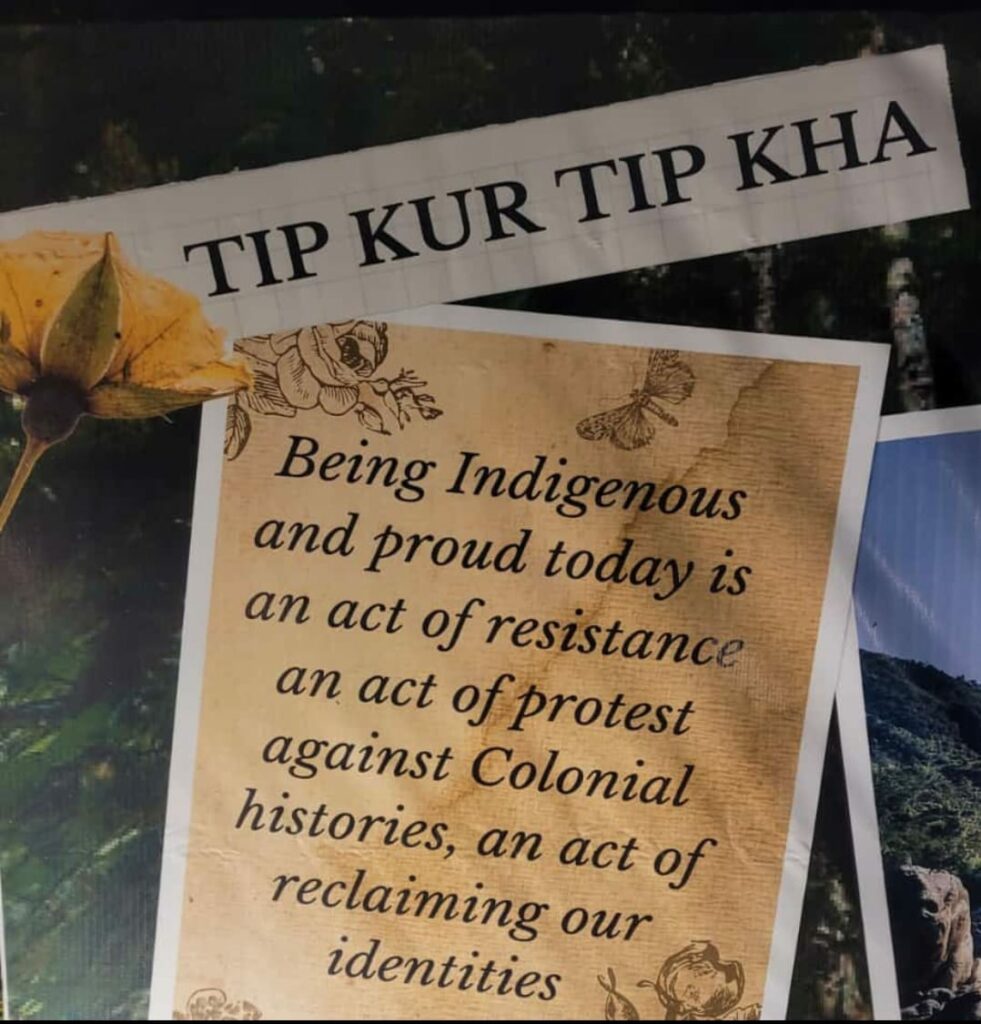
English is not our mother tongue—it is just an official language. In India, the state with the highest literacy rate is Kerala, where almost everyone has gone through the education system. We decided to not just provide people with an English textbook, because we asked, “Are the people actually able to understand and break down the concepts that they are reading in English?” Literacy does not translate into comprehension. To us, people’s mother tongue is what people can actually connect to. This is why we translate resources and publications into indigenous languages, from English.
Also read: Remembering Chipko Movement: The Women-led Indigenous Struggle
You know, I think the issues faced by women are universal. No matter how elitist someone may perceive themselves as, they must recognise that these issues are fundamentally wrong. Why do we have such few women—indigenous or otherwise—in positions of power? I think, through this interview, I just want to send out a message that all of us need to take space, speak out, and stand up for our rights.
FII thanks Mayfereen for her time, patience, and words. You may find more about her works on the website.
The interview has been paraphrased and condensed for clarity, at the interviewer’s discretion.
